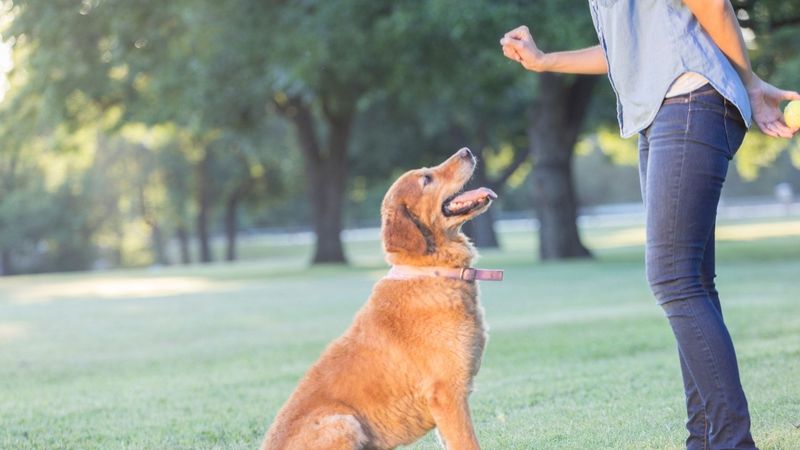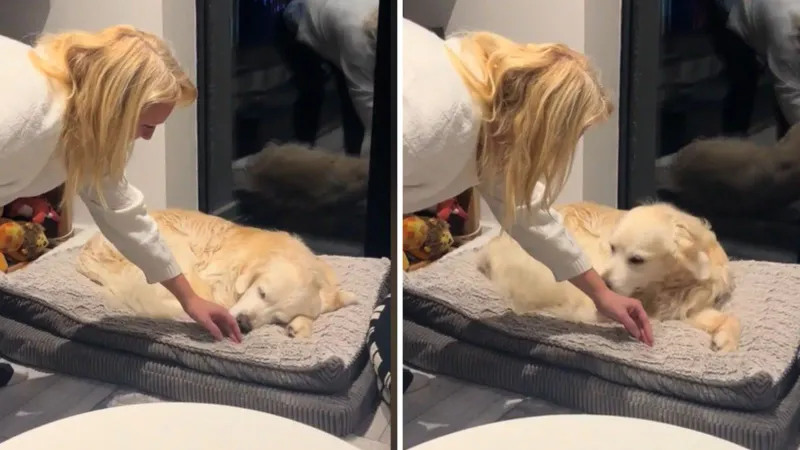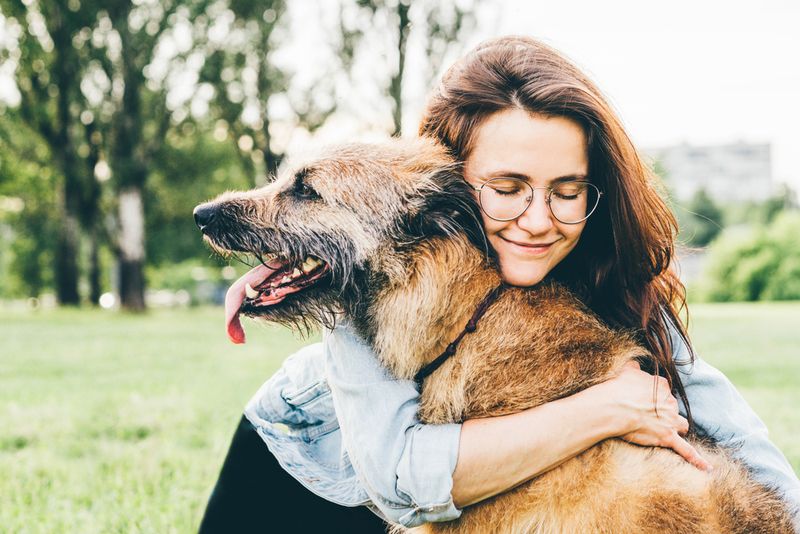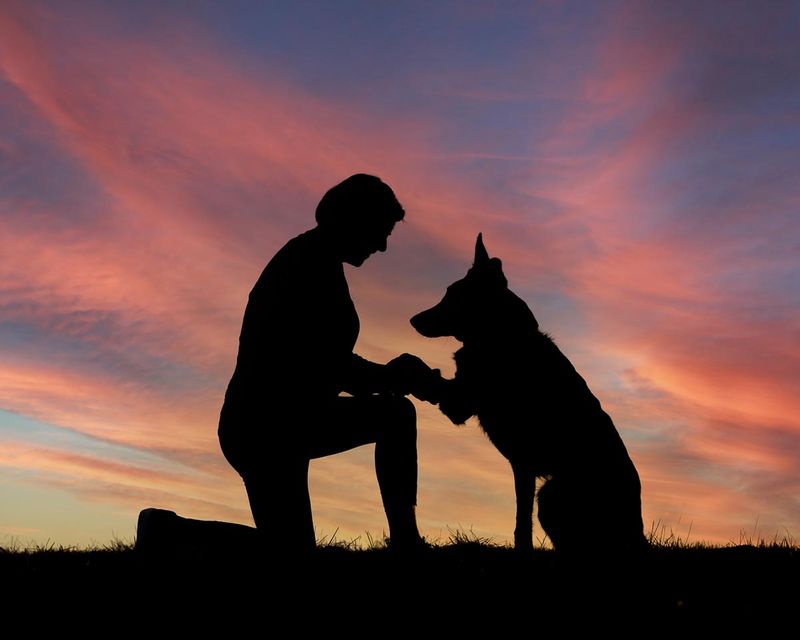Understanding when it’s time to say goodbye to our beloved canine companions is one of the hardest parts of being a dog owner. Recognizing the signs that it’s time and knowing how to make their final days comfortable can provide peace and closure. This post explores 11 specific behaviors that signal it’s time, as well as 7 compassionate ways to ensure their last days are as beautiful as their lives.
Lethargy and Fatigue
The once-energetic dog now spends most of their time resting, showing signs of extreme fatigue. Their playful spirit has waned, replaced by a noticeable lethargy.
At times, they may struggle to get up, their body no longer responding with the agility and strength it once had.
This behavior is a common sign that their body is preparing for the end. Cherish these moments of quiet companionship, offering comfort through gentle pats and a soft voice. Create a serene space where they can rest without disturbance.
Loss of Appetite
A sudden disinterest in food can indicate that a dog is nearing the end of their life. Once a voracious eater, they now ignore or refuse meals.
This behavior often accompanies other symptoms, suggesting that the body’s systems are slowing down.
While this can be distressing to witness, offering favorite treats and maintaining a peaceful dining environment may encourage them to eat a little. Ensure they stay hydrated, as even small sips of water can make a difference.
Persistent Pain
Chronic pain that medications no longer alleviate is a clear indication that it’s time. These dogs may exhibit signs of discomfort, such as limping or whining.
Their once joyful demeanor may be overshadowed by the struggle to move without pain. This condition not only affects their physical health but also their emotional well-being.
Consulting a veterinarian can provide insights into whether palliative care or more serious measures are needed. Comforting them with gentle massages or warm compresses can ease their pain temporarily.
Breathing Difficulties
Watching a beloved pet struggle to breathe is heart-wrenching. Labored breathing, especially when at rest, signals serious distress.
Dogs might breathe with their mouths open or pant excessively even when not active. This behavior can indicate fluid in the lungs or heart issues.
Immediate veterinary care is crucial to assess the situation. In the meantime, keeping the environment calm and avoiding additional stress can help ease their discomfort.
Incontinence
Incontinence can be a sign that a dog is nearing the end. They may lose control over their bladder or bowels, despite being previously well-trained.
This change is often frustrating for them, resulting in a sense of shame or confusion. It’s important to respond with kindness and understanding.
Using pet pads and maintaining a clean, odor-free environment will help preserve their dignity. Routine vet visits can provide potential solutions to manage symptoms better.
Social Withdrawal
A once-social dog may begin to isolate themselves, avoiding family members and other pets. This withdrawal is often a coping mechanism as they try to manage discomfort or pain.
Their usual enthusiasm for interaction diminishes, and they may seek solitude in quiet corners of the house.
Respecting their need for space is essential, but also gently offering companionship and affection can make them feel loved without overwhelming them.
Cognitive Decline
Cognitive decline in dogs manifests as confusion and disorientation. They may forget familiar faces or locations, and routines become challenging.
This behavior indicates that their mental faculties are deteriorating, often leading to anxiety or frustration. Creating a consistent and soothing environment can help them feel more secure.
Engaging them with simple, familiar activities can provide comfort and stimulation, easing some of the mental strain they experience.
Changes in Weight
Rapid changes in weight, whether loss or gain, can be alarming. This fluctuation often signals serious underlying health issues.
A decrease in weight might be due to a loss of appetite or metabolic problems, whereas weight gain could indicate fluid retention.
Regular veterinary check-ups are essential to monitor these changes. Providing a balanced, nutritious diet tailored to their needs can support their health during this vulnerable time.
Seizures
Seizures in dogs are distressing to witness and can indicate a serious decline in health.
These episodes may become more frequent as they age, causing significant stress for both the dog and the owner. While some seizures are manageable with medication, recurrent events often suggest a deeper issue.
It’s crucial to maintain a safe environment to prevent injuries during seizures. Consulting a veterinarian for appropriate treatment options can also provide relief.
Loss of Interest
A dog’s lack of interest in activities they once loved, like walks or playtime, is a poignant sign of their declining health.
This apathy often stems from physical discomfort or fatigue, overshadowing their natural curiosity and playfulness.
Offering gentle encouragement and creating opportunities for low-energy engagement can still enrich their days. Emphasize comfort and companionship, making their environment as stress-free as possible.
Increased Vocalization
Increased vocalization, such as whining or howling, can indicate distress or discomfort.
These vocal expressions might result from pain, cognitive decline, or the desire for attention and reassurance.
Listening and responding to these cues by providing comfort and checking for physical issues can help alleviate some of their concerns. A veterinarian’s insight can also guide appropriate responses to this change in behavior.
Create a Calming Environment
Creating a calming environment for your dog during their final days can significantly enhance their comfort.
Soft beds, gentle lighting, and soothing music can create a serene space where they can relax. This peaceful setting helps minimize stress and anxiety, allowing them to rest peacefully.
Keep the area quiet and free from disturbances, ensuring that they have a safe retreat where they feel secure and loved.
Maintain a Routine
Maintaining a routine provides a sense of stability and security for dogs. As they face the uncertainty of their declining health, familiar patterns offer comfort.
Regular feeding times, walks, and grooming help them feel grounded and less anxious. This consistency reassures them that despite changes, some things remain the same.
Routine also helps owners monitor shifts in behavior or health, providing insight into their dog’s needs.
Offer Gentle Touch
Gentle touch is a powerful way to communicate love and reassurance to a dog nearing the end of its life.
Soft strokes, gentle pats, and soothing massages can ease physical discomfort and foster emotional connections. This tactile interaction shows them that they are cherished and supported.
Respecting their cues and preferences ensures that touch remains a comforting experience, rather than overwhelming them.
Spending Quality Time
Spending quality time with your dog during their final days enhances their emotional well-being.
Sharing simple joys, whether through quiet companionship or short play sessions, strengthens the bond you share. These moments create cherished memories, reinforcing your love and dedication.
Balancing activity with rest ensures that their energy levels are respected, making every interaction meaningful and enjoyable.
Celebrate Their Life
Celebrating a dog’s life acknowledges the joy they brought into your world. Reminiscing with photo albums, sharing anecdotes, and cherishing keepsakes honors their memory.
This celebration serves as a reminder of the happiness they provided and the love they inspired. It can be a healing process for the family, offering closure and gratitude.
Incorporating their favorite activities or foods into this time can also reflect their unique personality.
Capture Memories
Capturing memories through photos and videos ensures that the spirit of a beloved dog lives on.
These tangible reminders preserve the essence of their personality and the bond you shared. Moments of joy, silliness, and affection captured in time provide comfort and nostalgia.
Sharing these memories with friends and family can also keep their legacy alive, spreading the happiness they brought to all.
Provide Comforting Presence
A comforting presence can ease a dog’s anxiety and provide emotional security as they approach the end of their life.
Simply being there for them, offering your presence without expectations, shows love and understanding. This support can make their transition more peaceful and less daunting.
Respecting their need for both companionship and solitude ensures that they feel valued and loved at every moment.


















